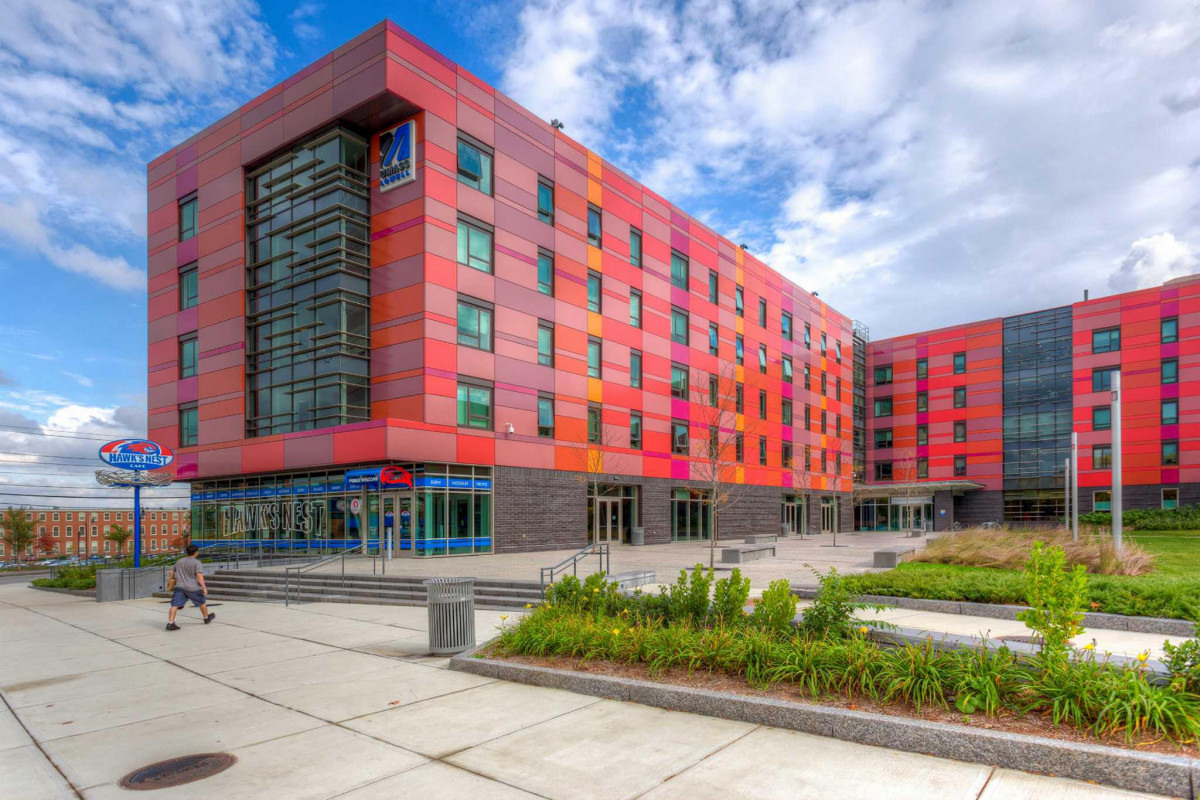(Photo courtesy of UMass Lowell) “Hawk’s Nest is one of several dining options at UMass Lowell that has not yet returned to its pre-COVID functionalities.”
Troy Lafond
Connector Editor
The quality of the dining hall has been a constant source of strife for students, as expressed frequently in this newspaper. Issues such as food availability during peak hours, food quality and availability hours have been centerpieces of concern for years.
Admittedly, issues with the quality of the food itself have been slowly improving. Instances of outright dangers such as bugs in food and undercooked meat have seemingly decreased, or they have been underreported to the staff of this paper. However, the food simply being less outright dangerous does not justify raising the prices even further than we are already paying.
Currently, the price of dining plans is slated to increase by $130 to $170 a year per person, depending on the meal plan option chosen. The new price of an unlimited meal plan consisting of 400 River Hawk dollars is slated to cost $5690 a year.
With three meals a day, 15 weeks in a semester, and two semesters in a year, this averages to a cost of about $7.76 a meal after removing the total of 800 River Hawk dollars. In my anecdotal experience, most residents use the dining hall twice a day, putting the cost per meal at $11.64.
With how restrictive the dining hours are, it only feels fair to expect that students will use the dining hall twice a day. Dinners outside of food purchased from UMass Lowell’s marketplaces are inaccessible to any student who works afternoon shifts. A four-hour shift starting at 4 p.m. means that a student should prepare to either eat dinner at 3 p.m., spend River Hawk dollars at the market to get through the night or go elsewhere to get takeout. The restrictive early morning options also prove challenging here, as hot breakfast is often not available until 8 or 9 a.m.
This cost does carry with it a decent theoretical array of options. There is a grill station, salad bar, pizza, daily specials and a sandwich bar. However, for many of the busiest times of day, food availability lacks.
Whenever I get hungry and need to go to the dining hall, there is usually no pizza, the grill is out of half of its food and the daily special line is far too long to use. Drink machines, particularly the juices, are often depleted with no one in sight to ask for a refill. These low standards do not justify the $11.64 paid for each meal.
Including the weekend meals almost feels disingenuous with how lacking the options are. Beyond omelets, there are usually no hot meals available until 11 a.m. By 7 p.m., the dining hall is closed. This leaves just eight short hours for students to eat two to three hot meals. A Dunkin’ bagel, a salad for lunch and a McDonald’s meal are significantly cheaper than these dining options. Part of the allure of a dining plan is its accessibility and ease of use, but the lack of food availability and restrictive hours prevent it from reaching its true potential.




